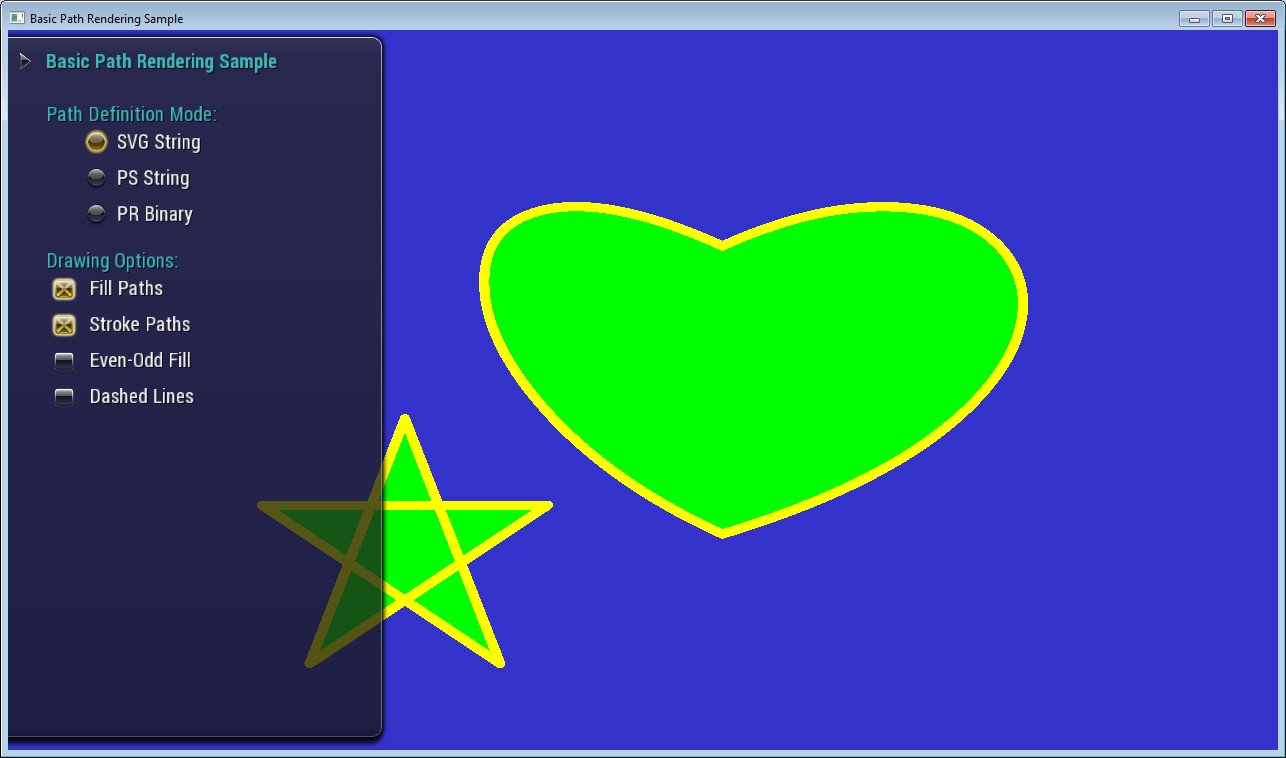NVPR Basic Path Rendering Sample
Description
This sample uses NVIDIA's Path Rendering extensions to demonstrate rendering stroked and filled 2D line-art, such as you would implement with Skia, SVG, or HTML Canvas, fully leveraging the power and speed of OpenGL hardware.

APIs Used
- NV_path_rendering
Shared User Interface
The Graphics samples all share a common app framework and certain user interface elements, centered around the "Tweakbar" panel on the left side of the screen which lets you interactively control certain variables in each sample.
To show and hide the Tweakbar, simply click or touch the triangular button positioned in the top-left of the view.
Technical Details
Path rendering is a new OpenGL extension that is focused on rendering a sequence of resolution-independent outlines, known as paths, which can be filled or stroked. Such paths can be painted with constant colors, linear or radial gradients, images, even arbitrary fragment shaders (i.e., bump-mapping).
Unlike bitmap images, path rendering content can be arbitrarily zoomed and rescaled without pixelized results. Path rendering contents are also easy to edit and animate because an artist can manipulate or edit the underlying paths that make up the scene instead of having to manipulate individual pixels. For this reason and many other advantages, path rendering powers important 2D graphics standards such as Skia, PostScript, PDF, Scalable Vector Graphics (SVG), Adobe Flash, TrueType font rendering, HTML 5 Canvas, and more.
This sample shows the most basic attributes of the path rendering APIs, focused on path fill and stroke commands. It shows three different forms of specifying path data, and minor styling ability.
Path Rendering supports the following primitives:
- Cubic curves
- Quadratic curves
- Lines
- Fonts/glyphs
- Arcs
- Dash & Endcap Style
Rendering Process
At a basic level, coding of path rendering support might look like the following:
//Compile an SVG path
glPathStringNV( pathObj, GL_PATH_FORMAT_SVG_NV,
strlen(svgPathString), svgPathString);
//Fill a stencil of the path
glStencilFillPathNV( pathObj, GL_COUNT_UP_NV, 0x1F);
//Configure stencil testing
//... as appropriate.
//Cover the stencil
glCoverFillPathNV( pathObj, GL_BOUNDING_BOX_NV);